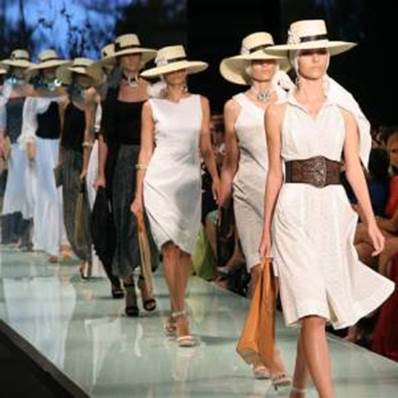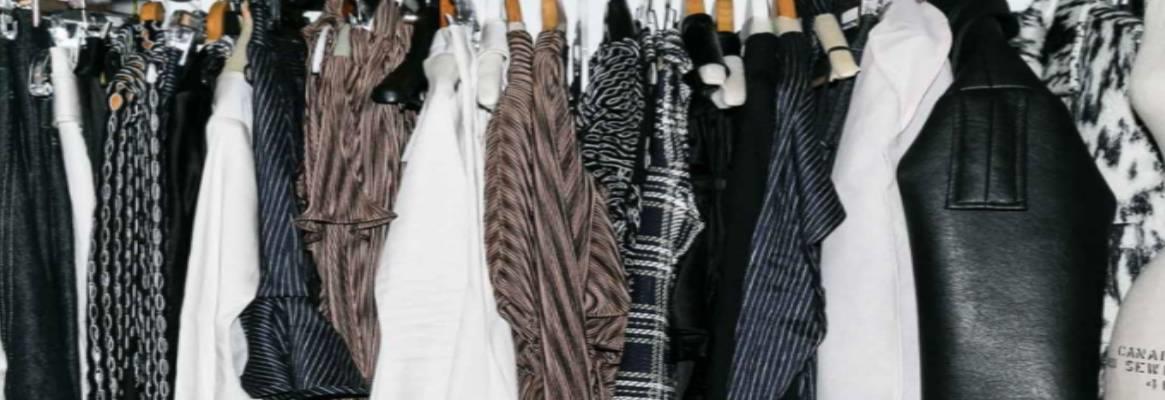It’s the most wonderful time of the year! A memorable season filled with loved ones, delicious food, and gift giving -- but it looks a little different this year. The effects of COVID-19 have turned the whole world upside down. We’re swapping holiday lotions for hand sanitizer and hot cocoa with orange juice. With empty malls and fewer people on the road, this new normal feels like an eerie Hollywood movie. t’s the most wonderful time of the year! A memorable season filled with loved ones, delicious food, and gift giving -- but it looks a little different this year. The effects of COVID-19 have turned the whole world upside down. We’re swapping holiday lotions for hand sanitizer and hot cocoa with orange juice. With empty malls and fewer people on the road, this new normal feels like an eerie Hollywood movie.
COVID-19 hit the fashion industry hard. With lockdowns in place and nowhere to go, clothing sales dropped 34 per cent in March. And that was only the beginning of a long journey ahead. The negative effects on apparel production, retailers, and consumer demand have forced the industry to adapt quickly. While it may have felt like the world was ending, looking for the good in every situation has been fashion brands’ key to success.
Fashion designers and brands spark change

Claudia Bertler Miami Fashion Week. Photo by: Miami Fashion Photographer James Santiago.
Shoppers and brands have finally come to terms with the reality of the pandemic. The uncertainty and lack of control that we’ve experienced through the past nine months created a sense of appreciation for what we do have, especially as the holidays come around. Industry insiders are looking at this stagnant period of financial growth to promote change and a new type of growth. Think doing things for the greater good instead of an individualistic approach, very Hallmark Christmas movie-like if you ask me.
Fashion designers and brands are looking to rebuild the supply chain while integrating elements of ethical and sustainable fashion. There’s pressure to move away from mass production to avoid cycles of overproduction. Afterall, no one wants to buy clothes to sit at home behind a computer all day. By focusing on reforming the production process, brands have experienced a noticeable reduction in the deadstock fabric and unsold inventory which makes up 10 per cent of the world’s carbon emissions. When looking at the bigger picture and how to collectively change the world, this discovery is monumental.
The luxury of online shopping
There’s an obvious growth in holiday online e-commerce shopping as opposed to traditional mall days. According to the U.S. Holiday Purchase Intention snapshot, 48 per cent of consumers plan to shop online, a 7 per cent increase from the previous years, heavily influenced by companies offering free shipping and curb side pickup. Retailers are adjusting their operations to meet consumer demands both on and offline. As soon as the pandemic hit, brands jumped on the e-commerce train and prepared for a long term shift in the way they did business. In efforts to increase sales, companies have also explored extended consumer payment options. Buy now, pay later features give consumers the luxury of paying for bigger ticket products via interest-free pay instalments, using companies like After pay and Klarna.
This gives the consumer more control over their purchasing power while reducing shopping cart abandonment. Fashion retailers are also focusing on adapting to COVID-19 fashion trends. As the majority of the world is stuck behind a screen, there’s been a 27 per cent increase in sales for waist-up apparel. Despite the fact that there’s a 30 per cent decrease in sales for pants and skirts, brands have the data, waist-up designs, and producers needed to efficiently meet new consumer preferences.
The power of flexibility
All in all, the power of adaptation and flexibility has helped brands and designers get through this ambiguous period of constant change. In looking at a big picture full of new and unforeseen obstacles, brands are taking the opportunity to pause and proactively strategize about how to best move their businesses forward in a more transparent and more digital friendly future. Designers have used the time to focus on their craft and make more meaningful industry and customer connections.
The holidays are a time to take stock of the year, and while it seems as if every industry is trapped in a COVID-19 snow storm, there is light (re: a vaccine) at the end of the tunnel. For now, we can feel optimistic about the long overdue, long-term tool kit fashion brands are developing to continue producing and selling through any future crisis situation.
This article has not been edited by Fibre2Fashion staff and is re-published with permission from makersvalley.net







Comments